
Asakusa is one of those neighborhoods in Tokyo that everyone is going to visit. There’s Sensō-ji, Tokyo’s oldest temple, as well as Hanayashiki, Japan’s oldest amusement park. It’s an area that feels like it has fallen through a crack in time, ready to give you a taste of Japan’s rich history.
That taste is rather literal. Next to magnificent sights, Asakusa is also famous for its culinary side, offering a plethora of traditional dishes waiting to be savored!
Tempura is one of them. It’s a crispy delight of various ingredients, most famously seafood and vegetables, being coated in a special batter and fried until wonderfully crunchy!
What is Asakusa’s Edomae Tempura
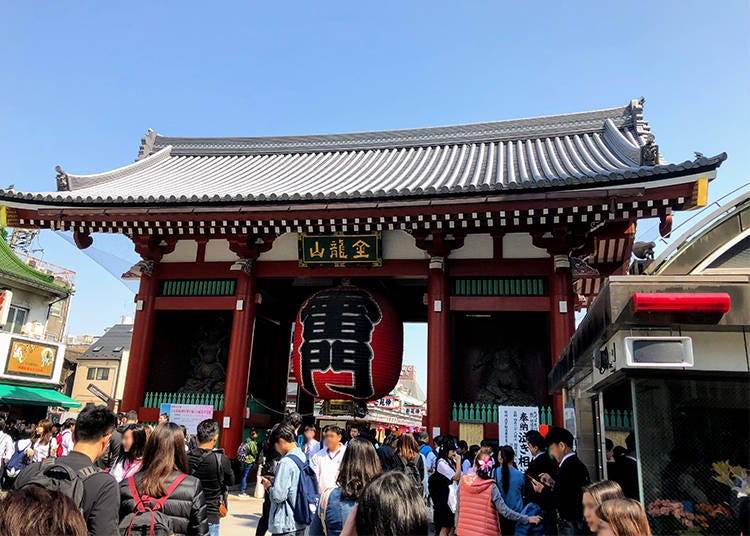
What you probably didn’t know is that there are various varieties of tempura. Among them is “Edomae tempura,” a specialty from Asakusa, one of Tokyo’s prime sightseeing areas. Edo is the old name of Tokyo and this variety got its name because people in Asakusa made tempura with all the ingredients available in Edo’s suburbs, deep-frying them in sesame oil. Another important point: vegetable tempura is actually called shōjin-age and treated as a different dish.
Now, let’s dive deeper into the crunchy world of Edomae tempura and visit three of the most delectable and authentic shops in Asakusa!
1) Masaru: the King of Tempura Bowls
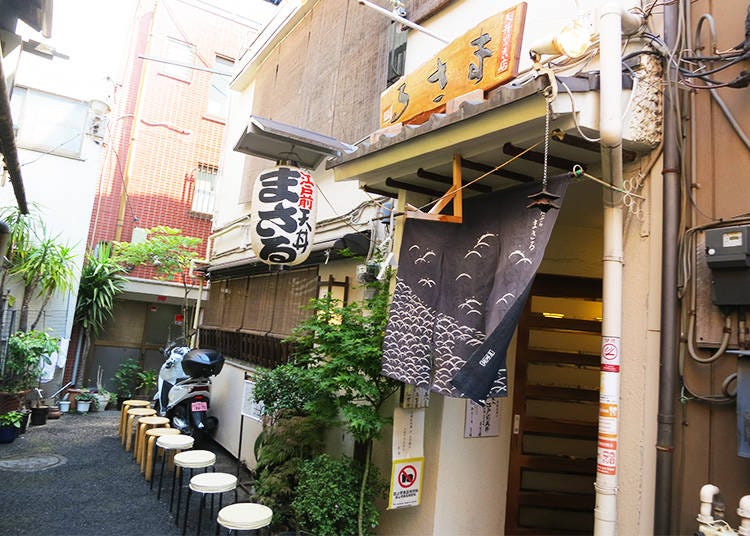
As you enter the scenic alley, you’ll immediately notice two things. One is the many chairs lined up in front of the restaurant, the other one is a large, flag-like signboard that says “delicious tempura bowls” in Japanese. Masaru has every right to advertise its delectable tendon tempura bowls like that, as they’re reputed to be among the very best of the neighborhood.
On many days, the shop only offers the “Ōiri Edomae Tendon” bowl (“plentifully topped tempura bowl”) for the rather princely sum of 3,700 yen – that is well above Asakusa’s average for tempura dishes. And still, you will not see a single day on which Masaru is empty or even without a queue.
The tempura is so amazingly good, the prices are more than justified and a lot of people regard eating here as a one-of-a-kind culinary experience that they’re treating themselves to.
Other dishes on the menu are the “Kuruma-ebi Tendon” (Japanese tiger prawn tempura bowl) for 5,800 yen or the “Edomae Tendon” for 3,400 yen. However, it seems that there’s a supply shortage for the necessary ingredients, so there might only be a single dish available.
Masaru is open only for three hours, between 11 a.m. and 2:00 p.m. There’ll be a queue in front of the ship throughout, but the tempura experience is well worth the wait.
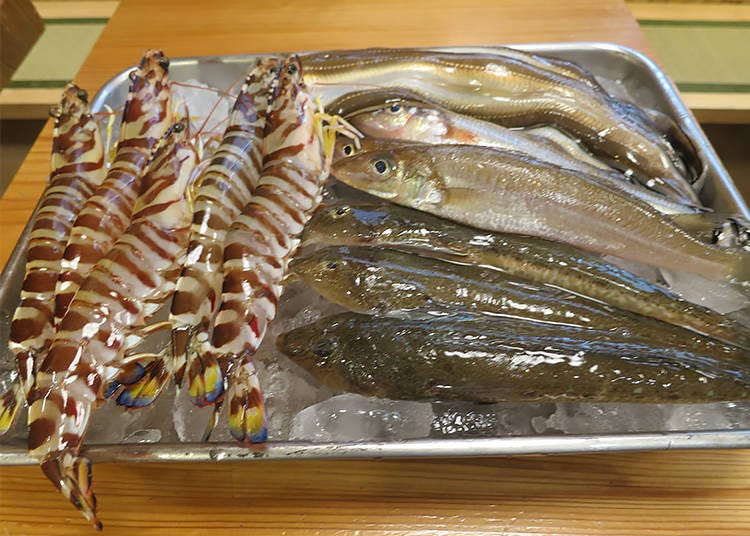
“90% of the tempura’s quality depends on the ingredients, 10% depend on the skill of the chef,” says Yoshinori Takasaki, the shopkeeper of Masaru. Even if the shop itself is only open for a very short time, he goes all-out to get the freshest day of the catch for his famed tempura bowls. “Committed to using very best ingredients” is Masaru’s philosophy.
When we visited the shop, he showed us said the ingredients of the day for the famous Ōiri Edomae Tendon. The Japanese tiger prawns were still jumping about, and even the conger eel, whiting, and flathead looked so fresh and shiny, we suspected they came out of the water mere minutes ago.
At some point, the restaurant was the very definition of Edomae and exclusively used ingredients from Tokyo Bay. Nowadays, that is no longer possible due to the supply shortage and the seafood now comes from Aichi and Oita Prefecture. “It’s inevitable because we’re committed to natural ingredients. The quality is the same, however,” explains Mr. Takasaki.
Speaking of – depending on the seafood supply, Masaru’s opening hours may be even shorter. On particularly unlucky days, the restaurant won’t open at all.

Finally, we’re served the legendary Ōiri Edomae Tendon! The tiger prawns are fried whole, served to complement the conger eel, whiting, and flathead tempura. The bowl really is plentifully topped, a serving so generous, the usual lid doesn’t even fit.
The first bite starts crunchy, but the inside is wonderfully soft and juicy, spreading the natural taste throughout your entire mouth. The sauce that tops the tempura is only made from kaeshi (a mixture of soy sauce, mirin, and sugar) and bonito soup stock. It’s simple but very effective. Usually, kaeshi is used as a sauce for noodle dishes such as udon or soba, boasting a gentle sweetness.
Even the sesame oil that Masaru’s tempura is fried in is made with the high-grade ball-squeezing method, adding to the all-around fantastic taste.
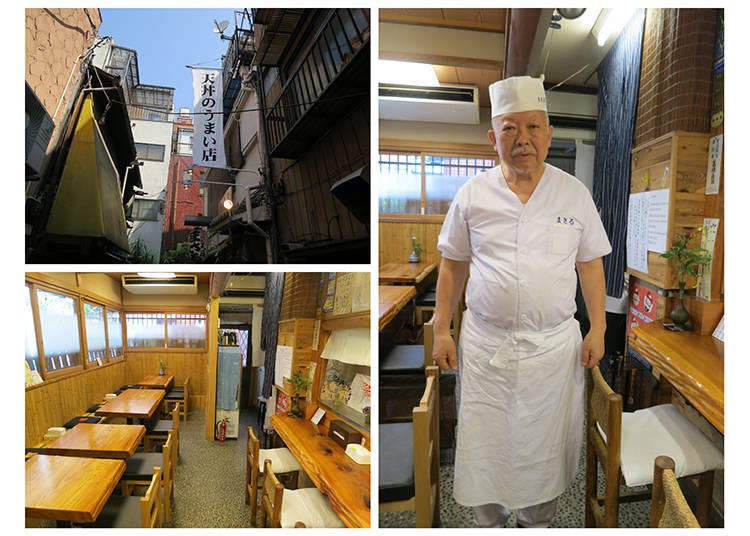
By the way, there’s a rumor on the internet that Masaru doesn’t let children in that are younger than elementary school age. “That’s not true,” corrects Mr. Takasaki. “It’s just that the store is very small, and it gets crowded, which makes kids uncomfortable. So we merely advise people to refrain from coming with small children while it’s particularly crowded.” He asks people with small children to talk to the staff about how crowded the restaurant is. “The menu might be a little pricey, too, so a lot of parents do not order for their children. That especially makes me feel sorry for the little ones.”
The thoughts behind the rumor actually come from a place of genuine kindness and concern. That alone makes you wonder how much love the shopkeeper puts into every single tempura bowl... it would certainly explain the heavenly taste.
-
Masaruまさる
- Address 1-32-2 Asakusa, Taitō-ku, Tōkyō-to 111-0032
-
Nearest Station
Asakusa Station (Tokyo Metro Ginza Line, Toei Asakusa Line, Tobu Skytree Line, Tsukuba Express), 3 minutes on foot
- Phone Number 03-3841-8356
Hours: 11:00 a.m. – 2:45 p.m. (shop closes at 3:00 p.m. or when out of ingredients)
Closed: Wednesdays, Sundays, New Year’s (may be closed in case of supply shortage or bad weather)
2) Tempura Nakasei: a Traditional Taste Loved by Famous Writers
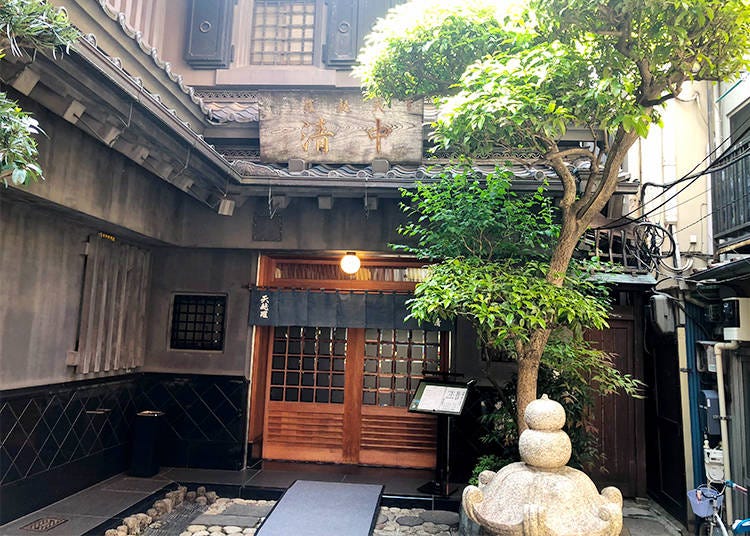
Our next tempura stop is Nakasei, located in an alley just opposite of the Asakusa Public Hall. The building alone stands out, built in a beautiful, traditional style called sukiya. The restaurant was originally established in 1870 and thus boasts a long history, but the original building did not survive the Great Kanto Earthquake and the air raids of WWII.
The current restaurant was built after the war and adjusted later on while the restaurant itself continued to make history. There’s a pond in Nakasei’s courtyard in which large carps frolic about, so this restaurant even offers a bit of sightseeing as well! It certainly is a fascinating place, letting you feel Japan’s rich culture through and through.
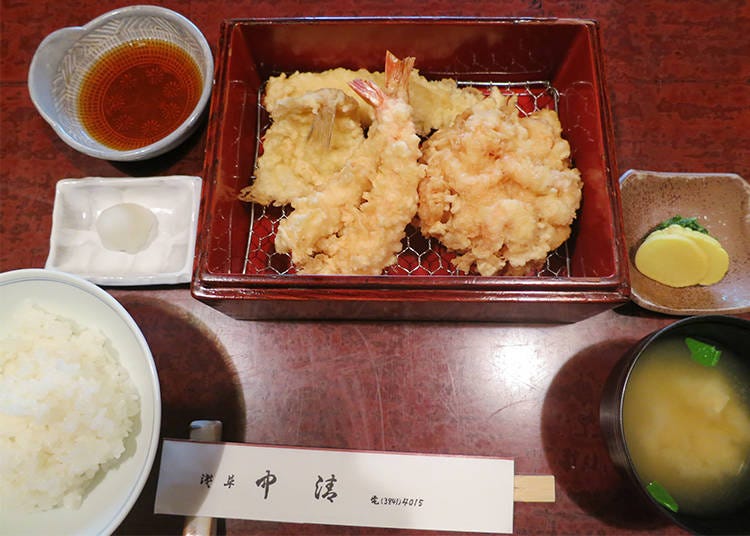
The most popular dish on Nakasei’s menu is the “Tempura Set Meal” for 3,000 yen. It features two Japanese tiger prawns, whiting, conger eel, and kaki-age, a “tangle” of seafood. Depending on the season, you might also find young sweetfish on your plate. The kaki-age is fried with shiba shrimp, boasting a taste and texture different from the tiger prawns used for the larger tempura.
The oil that the delicacies are fried in is a mix of sesame oil and salad oil, making for a vivid golden color and a nice crunch. Nakasei serves Edomae tempura as well, so there won’t be any vegetables. A refined sauce provides a wonderful balance, however, making sure that the seafood isn’t too overwhelming.
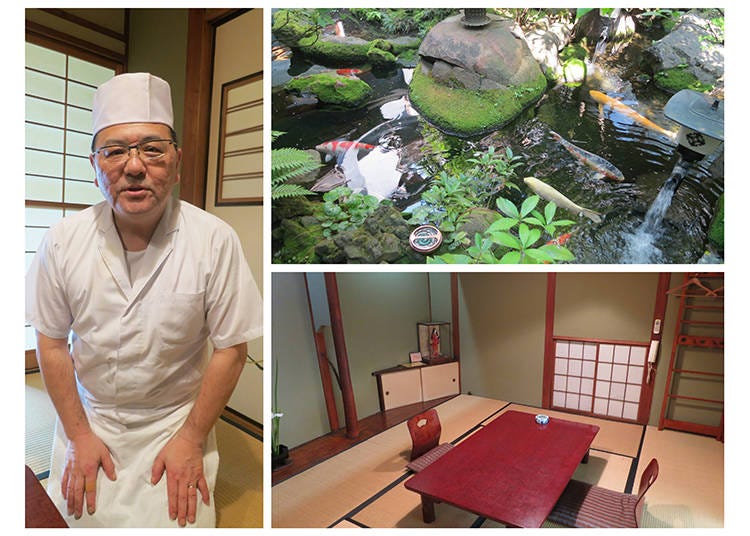
Nakasei also boasts a history of being a favorite restaurant for famous Japanese writers such as Kafū Nagai. Another regular was Mantarō Kubota, an author and poet who is said to have been childhood friends with the third-generation shopkeeper. This legacy is palpable not only in Nakasei’s wonderful atmosphere, but also in the crunch of the tempura – maybe you’ll get inspired yourself!
-
Tempura Nakasei天麩羅 中清
- Address 1-39-13 Asakusa, Taitō-ku, Tōkyō-to 111-0032
-
Nearest Station
Asakusa Station (Tokyo Metro Ginza Line, Toei Asakusa Line, Tobu Skytree Line, Tsukuba Express), 5 minutes on foot
- Phone Number 03-3841-4015
Hours
Weekdays: 11:30 a.m. – 2:00 p.m.; 5:00 p.m. – 10:00 p.m.
Saturdays, Sundays, public holidays: 11:30 a.m. – 8:00 p.m.
Closed: Tuesdays, the 2nd and 4th Wednesday of the month
3) Daikokuya Tempura: Spicy, Unique, and Incredibly Delicious!
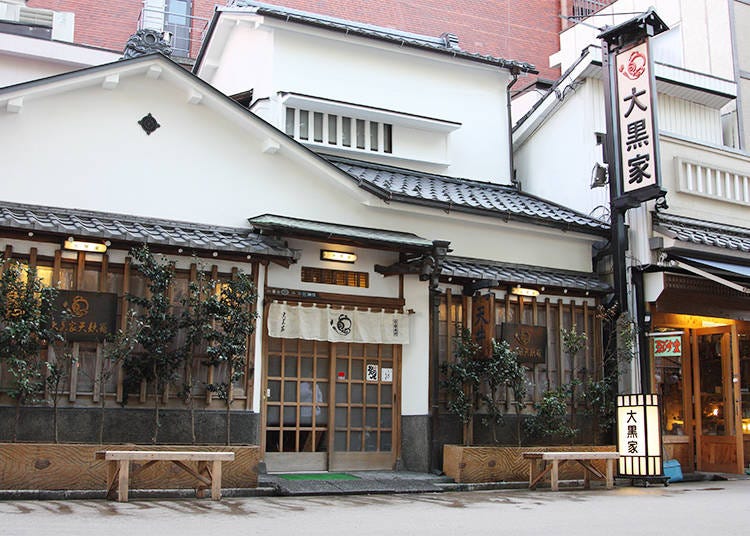
Last but certainly not least, we make our way to Daikokuya. It’s also one of Asakusa’s most representative tempura restaurants, founded back in 1887. Curiously enough, it started out as a soba restaurant and even though it was popular, there didn’t seem to be much profit in buckwheat noodles. One day, when the shop made soba tempura and they sold like crazy, it changed its menu entirely and switched to tempura at the end of the Meiji period – at least that’s how the story goes.
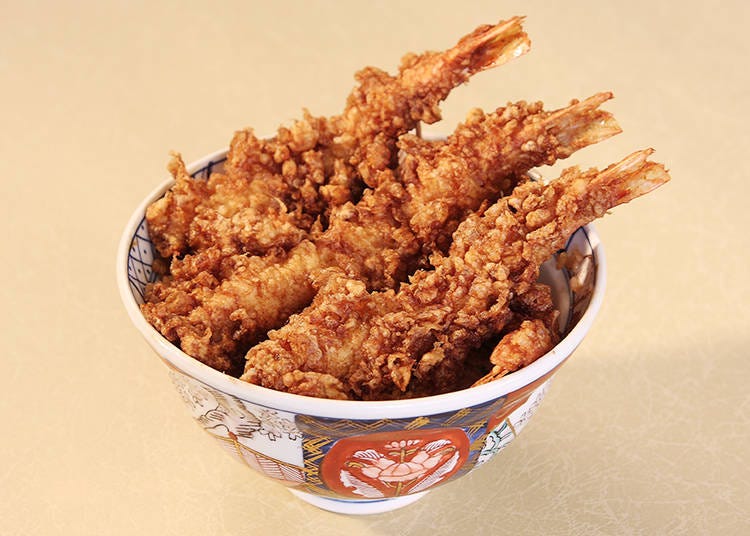
Daikokuya is a popular restaurant that usually boasts rather long queues during lunch and on holidays. However... “Our tempura is polarizing. People either love it or hate it,” explains Michio Kobayashi, Daikokuya’s manager. The tempura looks unusually dark, which is because of the sesame oil typical for Edomae tempura. Another reason for the intense color is Daikokuya’s characteristic sauce: rich, flavorful, and salty-sweet. It is rumored that this sauce is made with the same recipe since the restaurant’s opening, a well-guarded secret.
Another major characteristic of Daikokuya is that the tempura isn’t really crunchy but instead rather moist and firm to the bite. That might be a bit of a culture shock for some, but we absolutely urge you to give it a try! It’s this uniqueness that people are queuing up for every day.

-
Asakusa Daikokuya浅草大黒家総本店
- Address 1-38-10 Asakusa, Taitō-ku, Tōkyō-to 111-0032
-
Nearest Station
Asakusa Station (Tokyo Metro Ginza Line, Toei Asakusa Line, Tobu Skytree Line, Tsukuba Express), 5 minutes on foot
- Phone Number 03-3844-1111
Hours: 11:00 a.m. – 8:30 p.m. (open until 9:00 p.m. on Saturdays and Sundays)
Closed: always open
- Area
- Category
*Prices and options mentioned are subject to change.
*Unless stated otherwise, all prices include tax.
Popular Tours & Activitiess
Recommended places for you
-

New Seibu L00 Series Launching in 2026! What to See Along the Tokyo-Area Golden Route
by: Guest Contributor
-

2025 Autumn Colors Report: Kurobe Gorge Nearing Peak
by: Timothy Sullivan
-

Enjoy Japan's Gorgeous Winter Lights! Ride the Romancecar to Shonan no Hoseki Illumination
by: Guest Contributor
-

Simply Oishii Wagashi School Discover Japanese Culture Through Wagashi: A Hands-On Experience!
by: Guest Contributor
-

Don't Miss Out! The One Thing You Must Do Before Shopping at Mitsui Shopping Park LaLaport: Get Your Max 10% OFF Coupon Book
-

Get Ready to Catch 'Em All! First Ever Permanent Outdoor Pokémon Park Opening Near Tokyo!
Inspiration for Accommodations
-

Enjoy Mt. Fuji from the Comfort of Your Room! Recommended Ryokan with Mt. Fuji View
-

Stay Near the Cherry Blossoms! Hotels for Cherry Blossom Viewing in Tokyo
-

Family-Friendly Hotels with Free Shuttle to Disneyland: Convenient Access for a Magical Stay
-

Top Ranked Hakone Hotels with Mt. Fuji View: Enjoy Stunning Scenery from Your Private Space
-

Convenient Tokyo Hotels with Airport Shuttle: Ideal for Families and Heavy Luggage
-

Stunning Tokyo Tower View Hotels: Enjoy Spectacular Scenery from Your Private Space
-

Convenient Asakusa Hotels with Kitchens: Ideal for Extended Family Visits
-

Experience Luxury: Hakone's 10 Best Five-Star Accommodations
-

Enjoy Mt. Fuji Autumn Leaves! Top Hotels Near the Popular Autumn Leaves Corridor
-

Experience Hakone Fall Foliage from Your Room with Stunning Views
-

These 5 Restaurants in Asakusa Are Among the Area's Oldest!
-

Shinjuku Gourmet Walk: Snacking Through Metro Shokudo-gai’s Traditional Restaurants and Eateries
-

Japanese Soul Food You'll Love: Tokyo's 3 Best Tempura Bowl Restaurants
-

Tokyo’s Tastiest Tempura
-

Autumn in Japan 2025: Fall Foliage Forecast & Where to Enjoy the Colorful Leaves (+Tour Info)
-

Ueno Station Area Guide: Fun Ways to Explore Tokyo's Popular Destination (Area Map & Sightseeing Tips)
- #best ramen tokyo
- #what to buy in ameyoko
- #what to bring to japan
- #new years in tokyo
- #best izakaya shinjuku
- #things to do tokyo
- #japanese nail trends
- #what to do in odaiba
- #onsen tattoo friendly tokyo
- #daiso
- #best sushi ginza
- #japanese convenience store snacks
- #best yakiniku shibuya
- #japanese fashion culture
- #best japanese soft drinks


















